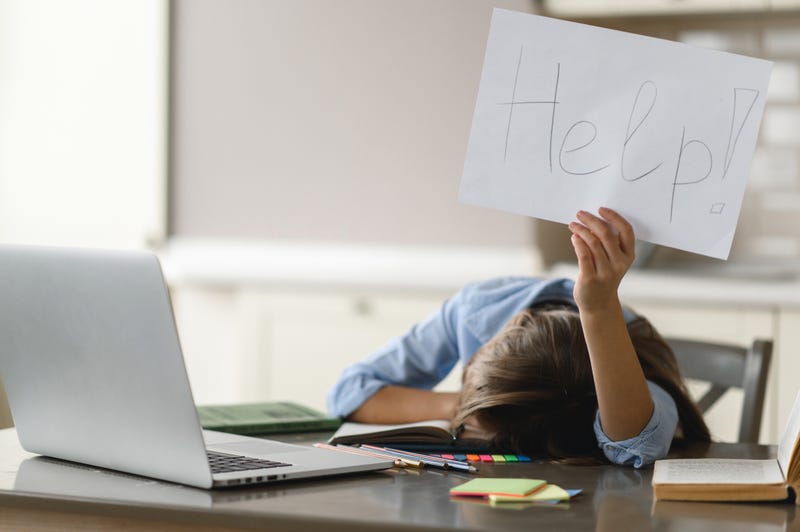
Even as the U.S. rolls out vaccines for school-age children, schools across the country are closing or moving to remote learning models in part because teachers are exhausted.
This week, USA Today reported that teacher burnout is one of the factors leading to a slow return to in-person learning for some schools.
According to a recent report published by RAND Corporation, “a much higher proportion of teachers reported frequent job-related stress and symptoms of depression than the general adult population.”
Instruction methods and health were the highest-ranked stressors, said the report. Technology issues and other pandemic-related conditions during remote learning also contributed to stress, depression and burnout.
Of the teachers surveyed, one in three was responsible for taking care of their own children while teaching classes.
Nearly one in four teachers also said they would probably leave their positions by the end of last school year. This figure was up from one in sex prior to the COVID-19 pandemic, and it showed that Black or African American teachers were more likely planning to leave.
Randi Weingarten, president of the American Federation of Teachers, said fights over critical race theory, transgender bathrooms and test scores also add to the pressure for educators.
“You don't just have the Great Resignation. You also have the Great Exhaustion,” she said. “This is a year to listen to the pain and the anxiety and work together to get through it. This is a moment when people have to come together because none of us are going to get through this alone.”
In Michigan, at least eight schools have shut down or returned to remote learning in recent weeks due to staffing shortages, said USA Today. Schools in Florida, Seattle, Wash., and Portland, Ore., also extended school holidays.
In Bellevue, Wash., near Seattle, administrators preemptively closed schools Friday because so many teachers are taking the day off after the Veterans Day holiday. Allison Snow, a fifth-grade teacher and the local union president, said everyone is worn out.
“We're trying to plow through so much that people are exhausted. And it's across the board," said Snow. “We have bled our teachers dry for so long that we shouldn't be surprised they have no more to give. And nobody wants to give up. But it's so hard to keep going when you feel set up to fail. One of the superpowers teachers usually have is patience. And people don't have that right now. All of it means it's harder for us to take care of kids.”
Before the pandemic, Boulder Valley School District in Colorado had a pool of about 900 qualified substitute teachers. It entered this school year with just 300.
District spokesman Randy Barber said the lack of subs led administrators to add another day to the Veterans Day holiday.
“We knew we would be stretching too thin and we knew it wouldn't be safe for students,” he said.
According to USA Today, “experts say missing more school means some kids, particularly those from low-income families, will fall even further behind their peers.”
Apart from exhausted teachers, the pandemic has led to supply chain issues and labor shortages for school nurses, bus drivers, security guards and cafeteria workers.
In September, the Brookings Institute offered some suggestions for dealing with pandemic-related pressures on schools. These included vaccinating students and creating supportive environments for teachers.
LISTEN on the Audacy App
Sign Up and Follow Audacy
Facebook | Twitter | Instagram
